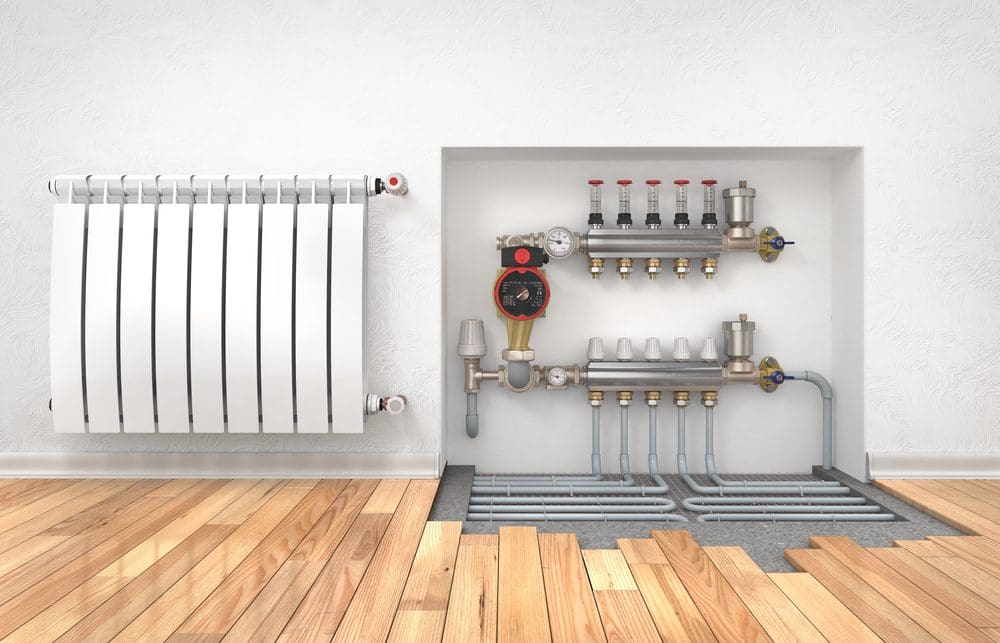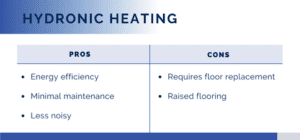
Looking for a more efficient heating system for your home that’s practically silent? What you may need is a hydronic heating system. This alternative to your typical system can fulfill your home’s heating needs in a way that keeps energy bills down and minimizes environmental impact. Take a few minutes to explore hydronic heating to find out if it’s right for your home.
Table of Contents
How Does Hydronic Heating Work
Most homes use a forced air system to provide heat, which is often inefficient and requires more maintenance. Hydronic heating uses piping to circulate warm water around your home. What we call hydronic piping is placed beneath your floors and allows the heat radiating from the liquid to create a comfortable indoor environment with a consistent temperature.
Pros & Cons of a Hydronic Heating System

Pros
-
Energy Efficiency
Hydronic floor heating evenly distributes heat without the need for air ducts which often leak heat. It can be up to 25% more efficient than a forced air heating system, saving you money on energy bills. Even in the case of hydronic wall heating, the system’s energy efficiency in one of the best on the market.
-
Minimal Maintenance
Hydronic systems are out of sight and out of mind, requiring little to no maintenance for up to 20 years. If you have a hydronic heating system already and it’s near that time frame, it’s a good idea to have it inspected and replaced if necessary.
-
Silent
Furnaces can be noisy as they fire up and when pushing air out. Hydronic heating systems, on the other hand, can distribute heat without additional noise.
Cons
-
Requires Flooring Replacement
Since the hydronic heating system must be installed beneath your flooring, you’ll need to replace your current flooring. If your home needed new flooring anyway, then this could be a great two-birds-with-one-stone situation. However, homeowners who had new floors put in recently might not be so thrilled.
-
Raised Flooring
Installing hydronic heating means the surface of your floor may be slightly raised (up to an inch). This may cause a tripping hazard and can be a problem for any room with an inward-swinging door.
Types of Hydronic Heating Systems
Water Heating
A typical hydronic heating system will use hot water to transfer heat. However, modern-day systems can use other liquids like glycol to heat your home. Glycol is a common antifreeze added to a closed-loop system which helps to prevent water from freezing in piping near exposed areas and increases the water’s boiling point.
Electronic Heated Floods
Not all hydronic systems need liquids to distribute heat; some are electric. In this system, electric heating wires radiate heat from the flooring as opposed to piping and warm water. Compared to the water heating system, electronic hydronic systems are typically less expensive to install.
How To Install a Hydronic Heating System?
Has this blog inspired you to install a hydronic heating system in your home? While it can be done on your own, it’s always better to let a professional handle heated floor installation. HD Air technicians have experience working with hydronic heating systems and can help you get yours installed and set up correctly. All you have to do is schedule an appointment online or call HD Air.


